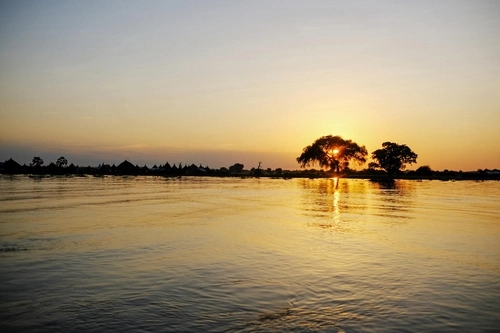UNEP(Washington insider magazine)-Recent reports from UN-Water and the UN Environment Programme (UNEP) reveal alarming trends in the state of the world’s freshwater ecosystems, with half of all countries experiencing significant degradation. Rivers, lakes, and aquifers are suffering from diminished flows, shrinking water bodies, increased pollution, and ineffective management practices. These findings, detailed in a triennial series of reports, emphasize the importance of restoring and protecting freshwater resources to achieve the Sustainable Development Goal (SDG) of “clean water and sanitation for all.”
The reports call for heightened support for Member States to confront these challenges through the UN’s strategy for water and sanitation, which is accompanied by a forthcoming Collaborative Implementation Plan. Dianna Kopansky, Head of the Freshwater and Wetlands Unit at UNEP, expressed grave concerns: “Our blue planet is rapidly losing its healthy freshwater resources, which poses severe risks to food security, biodiversity, and climate resilience. Although global political commitments to sustainable water management have increased, including a recent water resolution passed at the UN Environment Assembly, they are not matched by the necessary financial and actionable support. We need more tailored protection and restoration policies that can reverse this degradation.”
Global Patterns of Degradation
Currently, 90 countries, primarily in Africa and parts of Asia, are facing the degradation of one or more freshwater ecosystems. Contributing factors include pollution, dam construction, land conversion, over-extraction, and the impacts of climate change. River flow has decreased in 402 basins globally, a sharp increase since 2000, while only a limited number of basins are experiencing growth in river flow.
Human activities, particularly in Southeast Asia, have led to significant mangrove loss, jeopardizing coastal communities and biodiversity due to the vital water filtration and carbon sequestration roles these ecosystems play. Although the overall deforestation rate has stabilized in the past decade, the loss of mangroves remains critical.
In total, 364 basins worldwide have reported shrinking lakes and surface water bodies. High levels of nutrients and particulates in many large lakes can trigger harmful algal blooms, largely due to urbanization and agricultural practices. Conversely, the construction of reservoirs has resulted in a net increase in permanent water, notably in North America, Europe, and Asia.
Monitoring Gaps Highlight Urgent Need for Improvement
The disparity in water quality monitoring is stark, with the poorest half of the world contributing less than 3% of global water quality data, including a mere 4,500 lake quality measurements out of almost 250,000. This highlights an urgent need to enhance monitoring capabilities, as many countries will face inadequate water quality data by 2030, complicating efforts to manage drought, floods, and agricultural runoff.
Where reliable data exist, trends indicate declining freshwater quality since 2017. In regions lacking sufficient data, the outlook is less encouraging. Report authors recommend expanding government-funded monitoring programs and integrating citizen science, along with utilizing satellite-based Earth observations to address data gaps.
Slow Progress in Water Resource Management
Over 100 countries are making inadequate progress in implementing Integrated Water Resources Management (IWRM), which is essential for balancing societal and economic water needs. Only 47 countries have fully or nearly achieved IWRM, while 63 require acceleration, and 73 have limited capacity for its implementation. At the current pace, sustainable water management will not be achieved until 2049, leaving approximately 3.3 billion people in more than 100 countries without effective governance frameworks for water management by 2030.
To address these challenges, the reports suggest unlocking financing through revenue generation and cost recovery, investing in infrastructure, enhancing institutional capacity, and improving monitoring networks.
As the state of global freshwater ecosystems continues to decline, immediate action is essential to safeguard these critical resources for future generations.


























